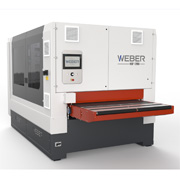Success Story KOCH Pac-Systeme: Data empowerment in machinery manufacturing
As a manufacturer of special machines, KOCH Pac-Systeme is a leader in know-how when it comes to the development and implementation of modular customised blister machines and packaging lines. The company from the Black Forest in Germany relies on simus systems in order to achieve excellence in business processes around SAP S/4HANA: So far, the collaboration between the two companies has led to the achievement of fast CAD part searches, high reuse, accurate costing, and the pre-migration classification and structuring of material masters.
As a market leader, KOCH Pac-Systeme has been developing bespoke and high-end packaging solutions in Pfalzgrafenweiler, Southern Germany for more than 50 years. The company’s product portfolio ranges from standard blister forming and sealing machines to bespoke special machines and packaging lines that can handle all processes from automatic product feeding to end-of-line packaging. Worldwide, the company serves customers in the areas of consumer and industrial applications, cosmetics and personal care, pharmaceuticals and medical devices, and provides a full range of solutions ranging from requirements analysis and consultancy to packaging design, machine design and manufacture, installation, commissioning, support and service.

The innovative machine concept behind the KOCH medplus® blister machine combines a large forming area with compactness and allows alternate use in the normal packaging area and in the clean room up to ISO class 7.
Efficient and cost-aware design
Around one in seven of the company’s some 450 employees work in development and design, and have long been supported by modern IT systems. In addition to the Solid Works 3D CAD system and a PLM solution, modules from the simus classmate software suite from simus systems have also been integrated since 2014. classmate PLAN, for example, automatically generates the work sequences for subsequent production from CAD models and assigns costs to them: “We can prepare more accurate quotations, run through different material or design variants and estimate the expected manufacturing or procurement costs more accurately,” explains Hartmut Kalmbach, Head of Procurement. “This has allowed us to make significant progress towards leaner, more flexible and efficient product development.”
Additional modules make it easier to find existing components based on diverse, geometric and descriptive criteria directly from within the CAD system interface. This means that components are reused more often, redundant work is avoided and the range of active parts is limited. Web-based tools combine the previously described benefit of making fast searches with that of cost information for employees in our Production Planning, Purchasing and Service departments.
“simus classmate tools help designers achieve greater efficiency and significant cost savings,”
reports Jürgen Bitzer, Head of Development at KOCH Pac-Systeme.
Migration to SAP S/4HANA
In 2021, the product life-cycle management (PLM) processes had to be revised in preparation for migrating the ERP system to S4/HANA. The existing PLM system was replaced and the Engineering Control Center (ECTR) from SAP was introduced. Firstly, the existing simus classmate processes had to be connected to the new SAP solution. Secondly, the existing material masters had to be classified and revised. “It wasn’t possible to simply transfer the existing detailed design information into the more general SAP material master,” says Marc Oesterle, a member of the Business Processes and Applications team. So they took a look around the market and examined various solutions based on the ECLASS standard. However, cooperation with a long-standing partner proved to be the best alternative:
“simus systems had the mechanical engineering expertise we were looking for, a wealth of experience in classification projects and finally a template so that we didn’t have to start from scratch with the structuring,”
states Oesterle.

Marc Oesterle – Member of the Business Processes and Applications team
Professional classification and data preparation
After the steering committee approved the project in March 2021, the material masters were read out and flushed through the “simus washing machine”: The classmate DATA software delivers powerful routines for analysing, reorganising, formatting and pre-structuring large numbers of data sets. This allowed around 380,000 material strains to be classified. This made it possible to generate standardised designations in several languages, for example “fillister head screw ISO4762 M18x15” for screws, and to use them for the migration.
Additional processing steps were performed in workshops involving the specialist departments for electrical and mechanical design, assembly and standardisation. In the course of the project, the simus systems template was adapted increasingly to customer-specific requirements and a class hierarchy was created. “We didn’t want to lose the existing, highly detailed engineering information from the PLM system just because the SAP material master didn’t provide any fields for it,” remarks Marc Oesterle.
After an intensive project phase of just over six months, they adopted the new classification with all its data and introduced it into daily operations. Since then, the material data has been managed in S/4Hana and synchronised with simus classmate. The excellent quality of the data is maintained in the material master description – which also ensures that all the data can be found quickly and easily.
Accurate calculation based on CAD models
The simus classmate modules are now integrated into SAP ECTR and are constantly being extended in small projects in cooperation with simus systems. The calculation provides a good basis for make-or-buy decisions, and even suppliers rely on the results: “Suppliers ask what our calculation has yielded and then offer the part in question together with their overhead marked up,” reports Marc Oesterle. The same applies to 3D printed parts, which we calculate with classmate PLAN and purchase on an intercompany basis from another company in the Uhlmann Group. The calculation processes for assemblies and machine frames have recently been expanded and the determination of raw materials with simus classmate has been further improved: If an aluminium part needs to be milled, for example, the software calculates the correct dimensions for the blank and recommends a semi-finished product from stock. Where ready-made ITEM profiles can be used instead of milling our own profiles from solid aluminium, simus classmate now specifies the correct profile and length for cutting. Convenient processes like these make a significant contribution to limiting manufacturing costs without sacrificing functionality or quality.
“With a batch size of one, which is frequent in the specialised machinery sector, calculating component costs is especially difficult. classmate PLAN gives us a very accurate view of what a component costs us and at what price we can sell it,”
observes Marc Oesterle.
Permanent Progress
As a manufacturer of special machines, KOCH Pac-Systeme strives for continuous improvement. For example, the experience gained from using classification in SAP S/4HANA has led to an extensive optimisation cycle with simus systems for the material masters, which has only recently been completed. In this way, we were able to incorporate the experience gained from a year and a half of using SAP S/4HANA into redesigning the classes and features. This project was also completed within schedule and budget for the planned project.
“simus systems gives us excellent support as we continue to change,”
says Marc Oesterle. Marc Oesterle relies gladly on the expertise and communication skills of simus systems consultants when it comes to classification or manufacturing costs: “We have a strong relationship based on partnership and have no hesitation in recommending simus systems without reservation”.

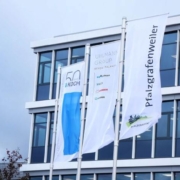

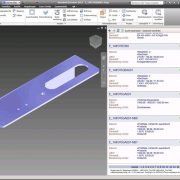


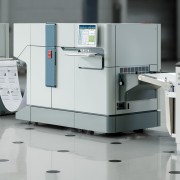
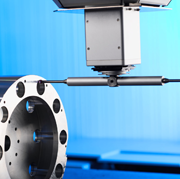 Theegarten
Theegarten